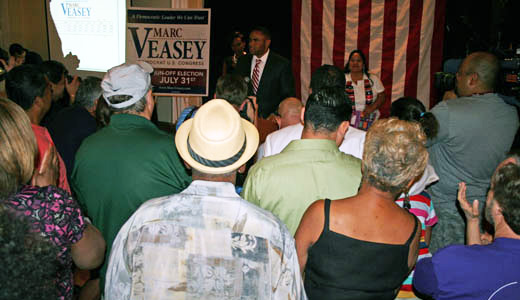
DALLAS – Texas finally finished its primary elections with runoffs July 31. If one were to believe the commercial media coverage, it would hard to get around the conclusion that Texas voters are lazy, mean, and not very bright. The commercial media emphasizes low turnout and the success of certain tea party candidates. The Dallas newspaper goes so far as to announce, on August 1, “The tea party is king in Texas!”
If they had wanted to look at the results differently, they might have concluded that younger candidates did much better than older ones or, as columnist Molly Ivins always put it, the ones with the most hair tend to win. If the major news publishers were to be suddenly stricken with honesty, they would have said that big money was the decisive factor.
Thanks to big money and the predilections of the commercial media, the biggest race in Texas was the runoff between Lt. Gov. David Dewhurst and trial attorney Ted Cruz for the Republican nomination to take the U.S. Senate seat being vacated by Republican Kay Bailey Hutchison. Dewhurst, backed by a great personal fortune, was ahead in the May 29 first round. Cruz and his tea party backers brought in major money and right-wing superstars to beat Dewhurst handily, 56%-44%, in the runoff. Helped by such anti-worker national celebrities as Sarah Palin, Jim DeMint, Glenn Beck and Rick Santorum, Cruz won the TV commercial battle over who could reach further to the right. The big difference that Cruz exploited was Dewhurst’s public record in leading the state Senate to a few bipartisan decisions. Cruz labeled Dewhurst a “compromiser.”
In less-publicized races around Texas, those who claimed “tea party” status didn’t necessarily win. The ones with big money won and the ones with less money lost. Was it ideology or dollars that made the difference in the Republican primaries?
Texas labor, of course, was not at all involved in the anti-worker contests of the Republican primaries. The labor movement focused on Democratic Party races. Of these, the most critical was newly-created Congressional District 33 where pro-labor candidate Marc Veasey battled with Domingo Garcia in the runoff. Republicans in state government had set the stage by creating one district that contained a majority of Latinos living in Dallas and a minority of African Americans living in Fort Worth. That one mixed district was the total of new “Democratic” districts, while the Republicans gave themselves three.
The news media made District 33 “Black versus Hispanic” and “Dallas versus Fort Worth.” The labor unions of both counties were early Veasey supporters because of the public records of the two candidates. When the results were final, Veasey publicly thanked his union supporters and named several of them, most notably from the Auto Workers and the Machinists, in his victory speech.
Turnout was extremely low throughout the primaries. The figures for the May 29 primary gave Republicans 11% of the electorate and Democrats only 5%. Runoff turnout, not reported immediately, is sure to be much lower.
Almost all news sources in Texas completely discount any chance of a Democrat winning a statewide race in November, because Republicans have dominated for the past 20 years. The past, however, is not always successful in predicting the future. Texas labor will be behind the candidacy of Democrat Paul Sadler to beat Ted Cruz and the tea party for U.S. Senate. They will be hoping that President Obama’s coattails will carry into Texas, that the incredible potential of the Texas Latino vote will finally be aroused, that big money won’t continue its decisive role, and that, overall, the Texas electorate isn’t as lazy and stupid as we are being told.
Photo: On the Democratic side, pro-labor congressional candidate Marc Veasey speaks to supporters after winning his party’s primary July 31. Jim Lane/PW












Comments